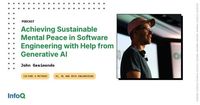Adobe Population Health, a company that integrates healthcare support with social wellbeing, is tackling unique challenges beyond traditional medical issues. Recently, they dealt with a particularly unusual request: a woman living in a trailer was unable to enter her living room because a bobcat had broken in and was sleeping on her couch. Alex Waddell, the Chief Information Officer at Adobe Population Health, shared this anecdote to illustrate the unpredictable nature of their work. "Now, I don't take bobcats out of people's houses, but you need to find a resource that will," he explained. "Or people who are homeless, how do we find people? You schedule them, and they have an address, but it's a PO box. We deal with stuff like that all the time." This flexibility is vital for the organization as it serves over 400,000 members across eight U.S. states, coordinating care for those in underserved communities.
Adobe Population Health's mission extends beyond healthcare; they also assist members in accessing essential services such as food, housing assistance, and home modifications. Waddell emphasized the importance of addressing these basic socioeconomic issues, stating, "We believe that if we can solve those base-level socioeconomic issues, that people can elevate to take care of their healthcare." However, providing this comprehensive care has not always been straightforward, particularly due to the challenges presented by fragmented patient data across multiple systems.
Since its inception in 2018, Adobe Population Health has relied on the Salesforce platform to manage its operations. Waddell noted, "I've fixed the interoperability problem; I don't have a bunch of systems that don't communicate with each other. We only have one system, so that allows our company to access things like Generative AI and other AI solutions to solve some of the problems that we have." The organization uses Salesforce Health Cloud for Electronic Medical Records (EMRs), Tableau for claims, and Health Exchange for member data sharing. This unified approach has streamlined their operations, allowing healthcare providers to focus more on patient care rather than administrative tasks.
One significant challenge Adobe Population Health faced was the inefficiency in preparing for member visits. Before implementing the Salesforce Agentforce, clinicians typically spent 15 to 20 minutes gathering necessary information for each appointment. With the introduction of this agentic AI platform, they can now create templates that pull data from various sources, significantly reducing preparation time. Waddell highlighted that Agentforce saves clinicians an impressive 375 hours each week and allows nurses to spend 75% less time on manual charting, which translates to annual savings of approximately $800,000.
Looking ahead, Adobe Population Health aims to enhance its technology further by improving information sharing with members during visits. Currently, clinicians must decide what information to relay to patients after their appointments, but Waddell envisions a future where relevant information is provided in real-time, increasing the likelihood that patients will act on it. He also expressed interest in developing a transcription agent to streamline data entry during consultations, which would allow clinicians to focus more on patient interaction.
To ensure compliance with healthcare regulations and protect member information, Adobe Population Health employs the Einstein Trust Layer, which encrypts sensitive data and restricts access to authorized personnel only. Waddell emphasized the importance of data security, especially given the organization's adherence to HIPAA and CMS requirements. "It was having something I could trust in when it came to when we got audited, is our data being secure when it enters into these models?" he remarked.
While much of their technological focus has been on supporting clinical and administrative functions, there are plans for member-facing applications as well. One initiative is an external-facing form called Maslow, designed to assess social determinants of health. Based on members' responses, Adobe Population Health can direct them to community resources. Waddell noted that transforming this form into an interactive agent could enhance engagement, allowing members to receive immediate assistance tailored to their needs.
In a different sector, Creative Innovation Company R/GA has launched its AI Search Optimization (ASO) Platform, a significant step in enhancing brand visibility in AI-driven search environments. Supported by R/GA’s $50 million Innovation Fund, the ASO Platform offers real-time diagnostics to help brands understand their presence across platforms like Google Gemini, Perplexity, and ChatGPT. Nick Coronges, Global CTO at R/GA, stated, "As part of our Innovation Fund, we’re investing in creating new products and solutions for our global clients that address emerging needs." This initiative is particularly timely, as more than 34% of Google searches now include AI-generated summaries, indicating a shift away from traditional search methods.
The ASO Platform provides brands with continuous monitoring, competitive benchmarking, and actionable strategy recommendations to improve their visibility in this evolving landscape. With Gartner projecting a 25% decline in traditional search engine volume by 2026, R/GA’s platform aims to equip brands with the necessary tools to adapt.
Meanwhile, Fortinet's latest Global Threat Landscape Report reveals that cybercriminals are increasingly leveraging automation and AI to enhance their attacks. In 2024, cybercriminals conducted a staggering 36,000 malicious scans per second, marking a 16.7% increase in active scanning compared to the previous year. Derek Manky, Chief Security Strategist at Fortinet, warned that "the traditional security playbook is no longer enough" and urged organizations to adopt a proactive, intelligence-led defense strategy.
As threats continue to evolve, the report highlights that cybercriminal forums are now sophisticated marketplaces for exploit kits, with over 40,000 new vulnerabilities added to the National Vulnerability Database in 2024 alone. This shift underscores the need for organizations to prioritize continuous monitoring and threat exposure management to safeguard their digital assets.
In the realm of software engineering, John Gesimondo, a seasoned engineer at Netflix, has been exploring how generative AI tools can enhance productivity and mental wellbeing. Gesimondo's framework addresses emotional recovery, structured planning, and fostering creativity, particularly for neurodivergent individuals. He emphasizes the importance of leveraging AI to streamline communication and maximize time spent on enjoyable tasks.
Gesimondo's insights reveal that while software engineering can be chaotic, integrating AI into workflows can provide structure and support emotional resilience. By embracing these innovative tools, professionals can navigate the complexities of their work environments more effectively.






